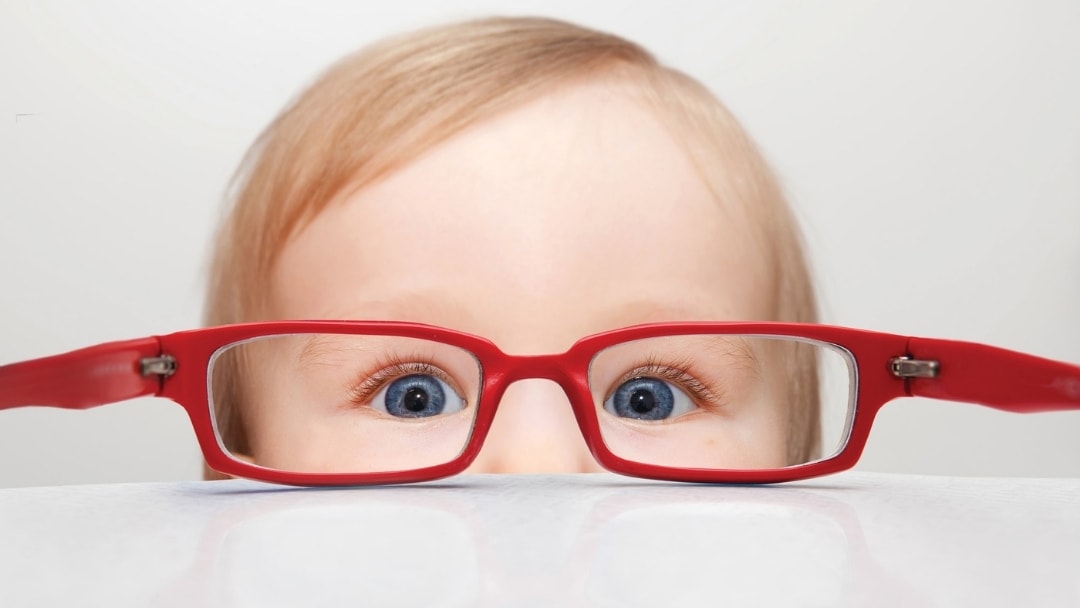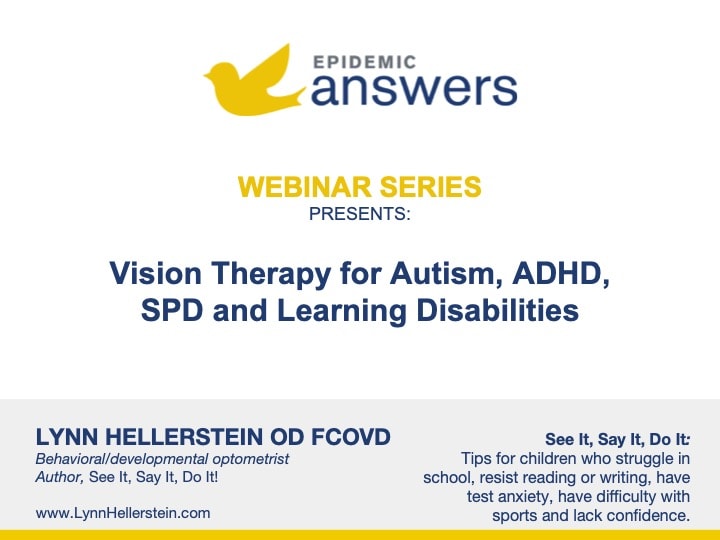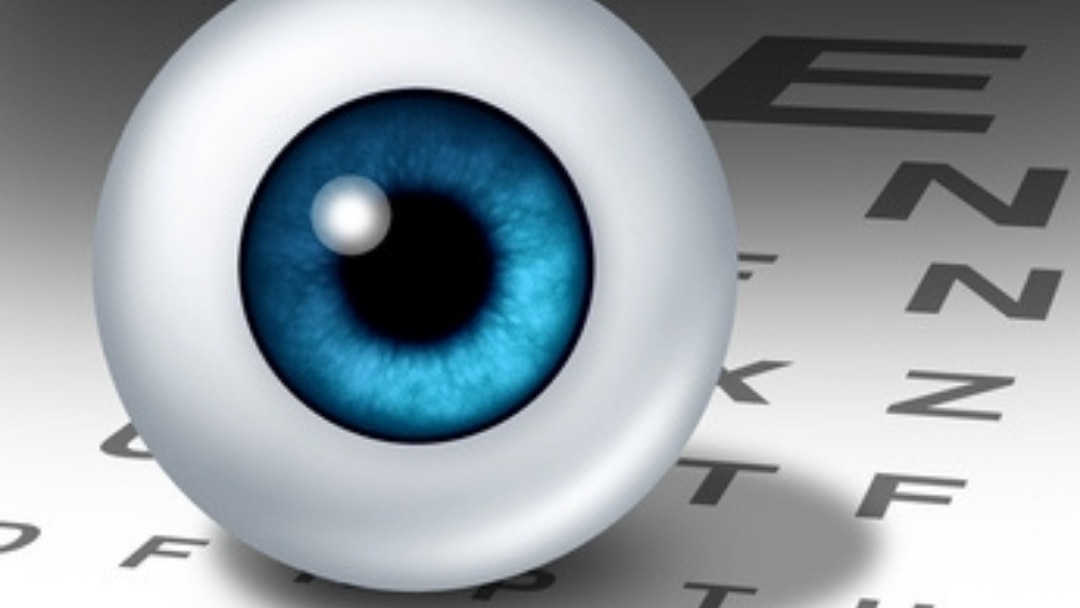Difficult behaviors can potentially be changed by improving vision, but most people don’t know that vision affects behavior, attention, learning and processing. They should, however, because the brains of children with autism spectrum disorders prevent them from correctly focusing on and perceiving what their eyes see.
Let a developmental optometrist prescribe special glasses, and watch those behaviors change!
Vision Involves Both the Eyes and the Brain
Seeing is far more than the prescription in your glasses. Have you ever picked up a new prescription that didn’t seem quite right at first? After a short time, your brain acclimates to a new way of seeing.
In treating those with developmental delays, eye doctors use lenses therapeutically to change perception. Why? Because perceptual deficits translate into impaired social skills, delayed language, motor problems, and a host of other symptoms even in children with 20/20 eyesight.
How Vision Affects Behavior
In perception, the brain must answer two questions about objects in the environment: what it is and where it is. If the answer to either of these questions is faulty, perception suffers.
Abnormal postures, such as a head tilt and fleeting eye contact, are an individual’s adaptations to distorted perception of the environment. Some children may over attend to space and have difficulty locating objects; others may over focus on details and not see the whole gestalt. Attempting to eliminate these behaviors without addressing their cause is ludicrous.
Changing the underlying visual dysfunction can often eliminate the behaviors, allowing the child to be more available for learning.
Single and Ambient Prism Lenses
All lenses displace light. Single prism lenses, which is what most of us wear, address the “What is it?” function. Once prescribed, they are typically worn for the rest of a person’s life, because they are compensatory.
Ambient prism lenses operate on the “Where is it?” function. They deflect the light rays differently through the thin edge at the top and the thick edge at the base, influencing how the brain interprets where the body is in space.
Perception in this area is tied to determining where you are relative to an object, how to move toward and away from it, and how to react to moving objects.
Yoked Prisms
When the prisms’ bases face in the same direction in both eyes, they are called “yoked.” Designed to alter neural organization, yoked prisms are powerful tools that can have a dramatic impact on the lives of those with autism and other delays.
Yoked prisms address a patient’s ability to organize space and create a coherent body schema. These lenses are used therapeutically to change the neuromotor processing of the brain; after rehabilitation occurs, they are no longer needed.
Yoked prisms can cause the environment to appear to be curved up, down, left or right. Objects may thus appear closer, farther away or sloped.
Prisms are employed in various magnitudes, which are measured in diopters. Altering both the magnitude and the direction of the prism can influence a patient’s perception.
Experiencing Prisms
Low-magnitude prisms can create an immediate unconscious change in posture or attention. Body movements give a child’s brain feedback to the effects of prism lenses, during therapy or in everyday life. Such was the case for a young boy who walked dragging his left foot. With yoked prisms he walked with a normal gait.
High magnitude prisms can create a conscious awareness of depth and movement, initiating a change in self organization through grounding of self. This was the case in a child who rocked from side to side before being introduced to yoked prism lenses. After disrupting his system with high magnitude prisms, he stopped the side to side rocking completely.
The immediate changes seen in performance with prisms are not permanent. However over time, the experience of changed perception leads to consolidation, which is adaptive, and then prisms can be removed.
Testing Vision
I have developed a test, “The Kaplan Nonverbal Battery” to help optometrists and others evaluate the effect of prism lenses. Tasks are arranged logically in a hierarchy allowing an observer to see how an individual reacts to increasing demands on the visual system.
Initial tasks focus on visual perception in isolation, while succeeding ones require the patient to coordinate visual, vestibular, proprioceptive, auditory, and gravitational input. In each step, the clinician assesses the patient’s posture, attention, and disposition, in response to a visual demand, both before and after applying ambient prism lenses.
Change Perception, Change a Life
Most children with autism and developmental delays use their vision poorly. Ambient prisms can help them use their vision more effectively to identify and experience their spatial environment differently. As vision develops more efficiently, it dominates over touch and audition, and performance improves in all areas.
To learn more about using lenses and vision therapy for children with developmental delays, read my book, “Seeing Through New Eyes”.
Integrating Lenses into a Complete Treatment Program
While lenses and prisms are powerful tools, the optometrist is only one member of a multi-disciplinary team treating a child. To achieve maximum benefit, a comprehensive treatment program includes at least biomedical, educational, and other sensory therapies. Therapists in these and other disciplines must understand how visual intervention impacts upon their therapies.
Likewise, optometrists must respect and learn about the synergistic reactions between other therapies and vision. With a team approach, we should be seeing an increasing number of kids recover and lead normal lives.
Dr. Melvin Kaplan is Director of the Center for Visual Management in Tarrytown, NY. He evaluates and treats children with autism and related disorders from around the world.
Still Looking for Answers?
Visit the Epidemic Answers Practitioner Directory to find a practitioner near you.
Join us inside our online membership community for parents, Healing Together, where you’ll find even more healing resources, expert guidance, and a community to support you every step of your child’s healing journey.




